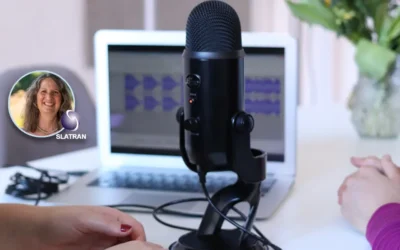Maintaining Networks as Teleworkers
Miriam Kahn, MLS, PhD
By now, most of us have been working from home, adjusting our routines to work in home offices and spare rooms. We’ve come to recognize that working from home, teleworking, isn’t easy.
It requires discipline and attention to details. It requires active communication, reading, and learning as well as marketing and on-time delivery of requested information and materials.
Most of us miss the social interaction, be it professional or personal. Networking is an integral yet often recognized aspect of working, curtailed by “social distancing.” We miss the day to day, face to face conversations that make up a significant part of our professional lives. Teleworking by its very nature separates us from our colleagues, distancing us from social activities and the active exchange of information, both formal and informal.
As teleworkers we must maintain our networks, our professional and collegial exchange of information and news. We are fortunate to live in a digital world where we can reach out to our far-flung and nearby colleagues.
Professional networks
Who is in your professional network? Usually, professional networks are comprised of colleagues you interact with on a regular basis.
What is a regular basis: daily, weekly, or monthly, or even annually? It doesn’t matter how frequently you communicate, it’s that you regularly reach out and interact.
Think of your network as a series of concentric circles with your office colleagues in the center and those you see at conferences every few years or less frequently in the outermost ring.
Work colleagues are people you see every day or so when in the office, including your direct reports, your supervisor, and, perhaps, your mentor.
For new teleworkers, they are the people you miss the most and are probably communicating with on a daily or even hourly basis. They are easy to stay in touch with. You call, email, and text regularly through the institution’s communication channels. You may even have a video meeting daily or weekly to stay on task, assign projects, and discuss issues that arise. If you find you are not communicating regularly with your office colleagues, build networking blocks into your daily routine. For example, you could set a half-hour before lunch and again at the end of your working day to reach out and discuss work projects and problems with colleagues. The other obvious time block is at the beginning of each work day. Whatever you decide, schedule a regular block of time to communicate.
The next circle of colleagues includes those you meet with, virtually or physically, on a monthly or regular basis throughout the year. They may be members of the same organization or be located in the same state. A common thread connects you. Since we live in this amazingly digital era, maintain the same meeting schedule except make it virtual. There are many ways to meeting virtually, just pick a video conferencing program, don your headset, and network. The mere act of seeing one another removes much of the social and professional isolation.
The outermost ring of colleagues, those you see at conferences or infrequently, are the most difficult to remain in touch with. This period of physical isolation doesn’t make it easier. Now is the time to bulk up your social media profiles. Many of the social media platforms, particularly LinkedIn, are designed for networking. Set up separate accounts for your personal and professional networks and social groups.
Networking or keeping in touch
Use social media to market or promote your professional activities. Provide links to papers and press releases from your organization. If there’s a new exhibition with text and images, provide a link and the PR to announce not only its presence but your role in the program.
Are you offering a class, workshop, or lecture? Add that information along with where to sign up online and what software or app to use.
Now is the time to add information about your current interests and projects. Upload papers you want to share. If you are writing a blog, provide a direct link to it. Make certain the blog is open to the public along with a subscription link. Designate a regular time (daily to weekly) to write and upload new content.
Use social media for maintaining professional relationships. Promote professional organizations and activities. For virtual programs, provide information about meeting times, frequency, and registration. If you are offering a program regularly, use the video software to set up a recurring meeting with a reusable link if possible.
Post actively on LinkedIn and other social media platforms. Provide email addresses so your colleagues can reach you. Include information about your professional activities and milestones.
Check your social media accounts regularly. Schedule a short block of time every day or week to review your social media accounts, update your profile, and respond to queries and communications. If your social media account is very active, you might have notifications sent to you via email. Beware, those notifications break your concentration and inhibit your ability to focus on your routine, daily work.
Summing it up
Networking and active communication are key activities for staying connected with colleague no matter their physical location. Regular networking sessions keep you connected and your work relevant. Better yet, active communication alleviates prevents social isolation. Regular contact is the difference between working in a bubble and staying connected.
Use social media, press-releases, video chat, email, and phone to keep your networks active and vibrant. Scheduling regular blocks of time to reach out enables networking, focuses your daily telework routines, and inhibits distraction.
Miriam Kahn, MLS, PhD
Miriam B. Kahn, MLS, PhD provides education and consulting for libraries, archives, corporations, and individuals. See Miriam’s pieces for Lucidea covering library technology and skills and strategies for special librarians. Refresh your knowledge of Lucidea’s flagship ILS, SydneyEnterprise, here.
Similar Posts
Interview with Victor Baeza about ALA’s Library Instruction Round Table
Interview with Victor Baeza, President of LIRT, about how it benefits from and supports special librarians whose roles involve teaching or training.
Interview with Eugene Giudice, SLA Treasurer
Interview with SLA’s Treasurer about the future of the special library profession and how the Special Libraries Association can benefit librarians
Interview with Cara Marcus on Transportation Librarianship and SLA
Interview with Cara Marcus, the president of the Special Libraries Association (SLA) transportation community about transportation libraries and SLA
Interview with Christian Nappo on the National Librarians of Medicine
Interview with the author of a reference-ready book on the twenty-seven men and women who headed the National Library of Medicine.
Hosting service
Enjoy all of the benefits of your Lucidea solution with secure, reliable, stress free hosting
Programs & incentives
No matter your size or budget, we’ve got you covered, today and tomorrow




Leave a Comment
Comments are reviewed and must adhere to our comments policy.
0 Comments